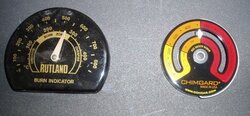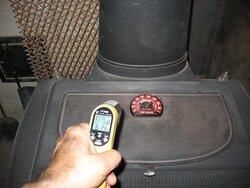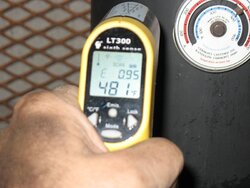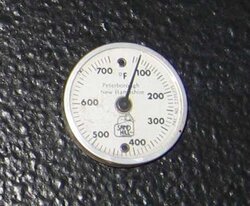With both the Rutland and the Condar magnetic surface mount thermometers in place on my stove, I lit a fire this morning..............
So far I see 70º difference in their readings, and the Laser is even lower, pointing the dot in the middle between them........
Like, right now (for example):
Rutland is reading 530ºF (approx.)
Condar is reading 460ºF (approx.)
________________
495º F (Delta)
Laser (by the way) is reading 450º (in between the two thermometers, from a distance of 3 inches from the stove). This is interesting, because it tends to agree more with the Condar, regardless of the "Delta."
-Soupy1957
So far I see 70º difference in their readings, and the Laser is even lower, pointing the dot in the middle between them........
Like, right now (for example):
Rutland is reading 530ºF (approx.)
Condar is reading 460ºF (approx.)
________________
495º F (Delta)
Laser (by the way) is reading 450º (in between the two thermometers, from a distance of 3 inches from the stove). This is interesting, because it tends to agree more with the Condar, regardless of the "Delta."
-Soupy1957






